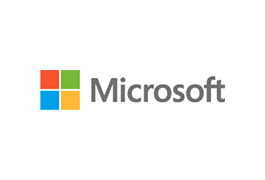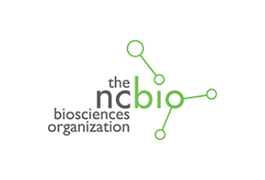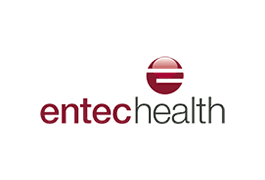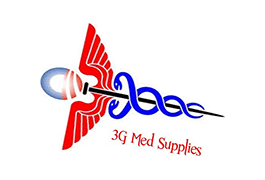Comparing common wound measurement techniques available today
While wound measurement and the tracking of healing progress is considered a routine part of patient assessment, wound measurement is a non-standardized, variable process that can introduce errors by as much as 40%1 and suffers from inconsistency. Even with considerable advances in technology, wound measurement in clinical practice today is still mostly a manual process with wounds most often measured using rulers and probes that while simple are not accurate, consistent or efficient, and often introduce infection risks.
In this article, we discuss and compare some of the common manual and electronic wound measurement and documentation systems used in clinical practice today.
Manual, contact wound measuring techniques
The three most common manual methods of assessing and imaging wounds in Clinical Practice today are the Ruler Method, the Acetate Method, and Digital Planimetry2.
The ruler method uses a disposable paper ruler to calculate the wound area, measuring the longest length by the widest width. A Q-tip is also often used to measure the deepest part of the wound. While this is still a very common method used in clinical practice it is widely accepted that this method is inaccurate and does not account for changes in wound shape. Schultz et al (2005) argue that ruler measurements can overestimate area by 44%. Mani and Ross (1999) point out that islands of epithelium may develop within the wound which cannot be recorded using the ruler technique and question if the acceptance of the ruler technique in practice is promoting poor practice and results2.
The acetate method involves applying a two-layer transparent acetate over a wound and tracing its perimeter. The contact layer of acetate is then disposed of and the top layer, which is preprinted with 1cm2 squares, is used to calculate the wound area and kept with the patient’s notes. With digital planimetry, wound care practitioners also use acetate to trace the border of the wound on the patient. The wound tracing is then placed on a tablet and re-drawn onto the device, which automatically calculates the wound area. While digital planimetry has been shown to provide more accurate results than standard ruler measurements1, measurement errors can be introduced with these acetate methods when the acetate is used on a curved surface to draw the outline and then flattened to calculate the area2.
Studies comparing these contact methods of measuring wounds show a high level of agreement with each other in wounds with an area of less than 10cm; however, there was a statistically significant difference with larger wounds2. Being able to accurately measure wounds and monitor their healing rates, especially in the first 4 weeks, can have significant implications for the treatment plans for patients3. For more information on the influence of wound measurement precision on the ability to classify wounds as “likely healer” or “likely non-healers” at 4 weeks, read this study.
Electronic, non-contact wound imaging and measuring techniques
As technology becomes more prevalent in hospitals, electronic wound imaging and measuring devices are becoming more commonplace. The move to using digital wound measuring devices that enable wound boundary tracing and accurate calculations will all provide more accurate measurements than those that can be obtained using manual wound measurement techniques. Simply by moving away from the common manual wound size calculation technique, of measuring the wound shape as a rectangle (length x width), to using a method that measures a shape that is closer to that of the wound, such as an ellipse, will provide a considerable improvement in the accuracy of the measurement. Shaw and Bell (2011) discuss various mathematical formulae that can be employed to calculate surface area wound measurements that will provide approximately a 25% improvement in the accuracy of wound measurements over the simple length x width formula4.
Many of the electronic wound imaging and measuring devices and applications have been developed in response to concerns about poor quality documentation and a need for wound images to accompany the patient’s record, as well as inconsistent manual measurement techniques. In more advanced wound care organizations, there is also a desire to improve communication between practitioners and provide evidence-based treatments that drive continuous improvements in their wound care practices. However, to date, there has been very little research undertaken to compare the effectiveness of these systems against each other.
A recent literature review of research on electronic wound measuring devices highlighted the variation in the extent and quality of the studies that have been undertaken to compare these devices. The literature review does, however, provide some useful measures for comparing electronic wound measuring devices. Read more.
The following discussion looks at four main categories of electronic wound imaging and measuring devices and compares them across a range of different criteria.
The four categories of electronic wound imaging and measuring device are:
- Commercially available digital cameras, which are used to take wound images that are then manually attached to the patient’s health record;
- 2D devices, which often use multiple point light sources with known geometry to determine the range between the wound and the measuring device;
- Digital planimetry applications, which use a target placed next to the wound and digital planimetry to determine the scale of the wound; and
- 3D wound measurement and imaging devices, which use structured light to measure the surface of the wound bed.
In this article, the key criteria used to compare these electronic devices are:
The utility of the device and software application
- How easy is it to hold, what is the minimum working distance of the device, and how many hands do you need to hold the device?
- How many devices are required at the point of care?
- How easy is it to get the data from the point of care reliably into the electronic health record system?
- Can all of the care team share and access the wound information?
- How easy is it to use with gloves?
- How easy is it to clean the device?
- How usable is the software application and how does the wound assessment workflow align with your clinical workflow?
- Is this a contact or non-contact measurement device?
- How does the device affect the patient’s experience during assessments?
The accuracy and precision of the measurements
- Is the improvement you will see using electronic wound measurement techniques better than you would see by simply moving from length x width area measurements to measuring the actual area as provided by techniques such as digital planimetry?
- How important is accuracy and precision over time to your organization?
- What are sources of error or variation in the measurement technique?
The functionality of the device and application
- Does the device deliver consistently good images under different lighting conditions?
- Does the device deliver consistently good resolution images?5
- How accurate is the wound tracing method?
- Is the wound boundary tracing manual or automatic, and how will this impact on both measurement accuracy & precision
- What types of measurement are possible – 2D: X&Y, surface area, perimeter, and then 3D depth and volume?
- Is tissue type or image/wound color classification possible?
The type and position of the wound
- Is the wound a chronic or surgical wound? Chronic wounds are often more complex and require longer treatment times and more accurate documentation of healing / non-healing than surgical wounds.
- Where is the wound located on the body? Wounds on the parts of the body with small surface areas and more complex shapes like toes and heels are difficult to accurately assess, measure and document. Some electronic systems will be better at dealing with complex wounds and body shapes than others.
The table below summarizes some of the key advantages and disadvantages of these four digital wound imaging and measuring methods. Watch a video discussion of these common wound measuring techniques and their advantages and disadvantages.
|
Digital Photography and Manual Measurement Techniques |
2D Digital Range Finding Devices | Digital Planimetry | Wound Imaging & 3D Measurement | |
| Utility |
|
|
|
|
| Accuracy and Precision |
|
|
|
|
| Functionality |
|
|
|
|
| Type of Wound |
|
|
|
|
Discussion
Wound imaging and documentation systems are used by a range of different users in different settings, from individual clinicians to multi-site hospital networks and also for clinical trials, so no one technique is going to be right for all of these scenarios. While more providers are using digital photography, the process of capturing, storing, uploading and linking digital photographs to EMRs or paper records can be unwieldy and error-prone. For wound care specialists, who are often stretched and rely on the assessments of unskilled, generalist staff, it is important to ensure the use of consistent wound assessment techniques that have been proven to give accurate and consistent data over time. Poor wound measurements and documentation often mean that providers pay unnecessarily high costs for wound treatments or are unable to correlate treatments to healing outcomes. Organizations who are moving to electronic wound measuring and documentation systems that integrate with their EMR system are seeing significant improvements in the accuracy and consistency of their measurements and documentation. This article has provided an overview of the various factors that must be considered when evaluating the various systems for clinical use. We recently interviewed some of the staff at Parkview Medical Centre, Pueblo, Colorado who are using the ARANZ Medical Silhouette system to improve their wound measurement and documentation. Watch these interviews with an inpatient and an outpatient nurse to hear how Silhouette is improving their wound documentation and measurements.
Click here for more information about Silhouette
References
- Rodgers LC, Bevilacqua NJ, Armstrong DG, Andros G. (2010). Digital Planimetry results in more accurate wound measurements: a comparison to standard ruler measurements. J Diabetes Sci Technol. Jul 1; 4 (4) pp. 799-802. https://www.ncbi.nlm.nih.gov/pubmed/20663440
- Gethin, G. ‘The importance of continuous wound measuring’ in Clinical Practice Development, https://www.woundsinternational.com/media/issues/136/files/content_100.pdf
- Flanagan, M. ‘Improving accuracy of wound measurement in clinical practice’ in Ostomy/Wound Management, 2003, 49 (10):28-40 https://europepmc.org/abstract/med/14652419
- Shaw and Patrick M. Bell (2011). Wound Measurement in Diabetic Foot Ulceration, Global Perspective on Diabetic Foot Ulcerations, Dr. Thanh Dinh (Ed.), ISBN: 978-953-307-727-7, InTech, Available from: https://www.intechopen.com/books/global-perspective-on-diabetic-foot-ulcerations/wound-measurement-in-diabetic-foot-ulceration
- Quality Standards for Teledermatology: Using ‘Store and Forward’ Images, esp Appendix E Camera/photographic specifications and photography protocol: https://www.bad.org.uk/shared/get-file.ashx?itemtype=document&id=794
Doc Number: 2017-00342





